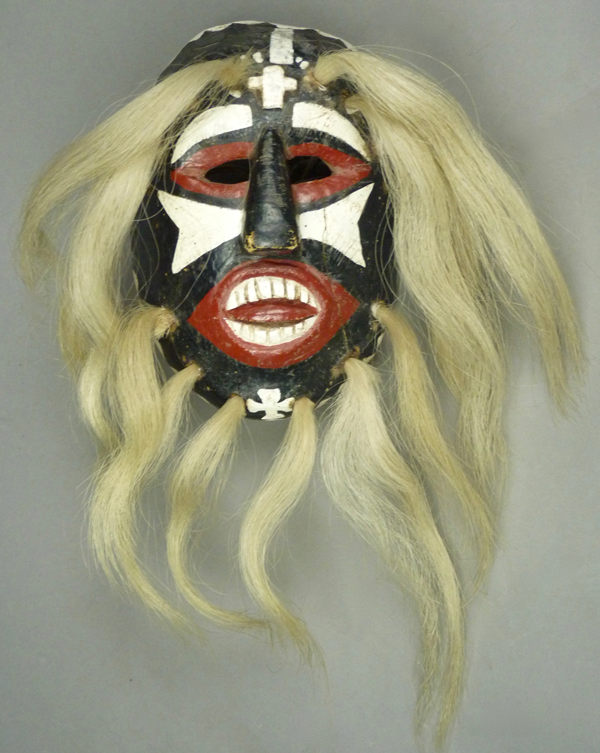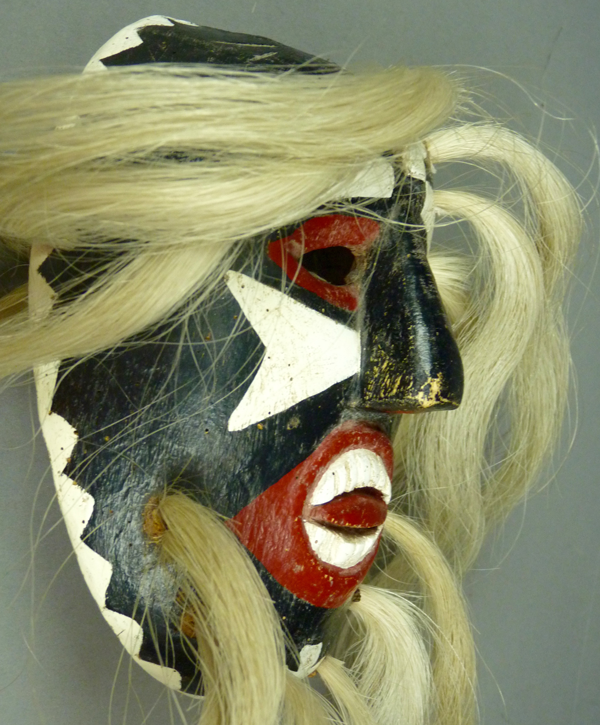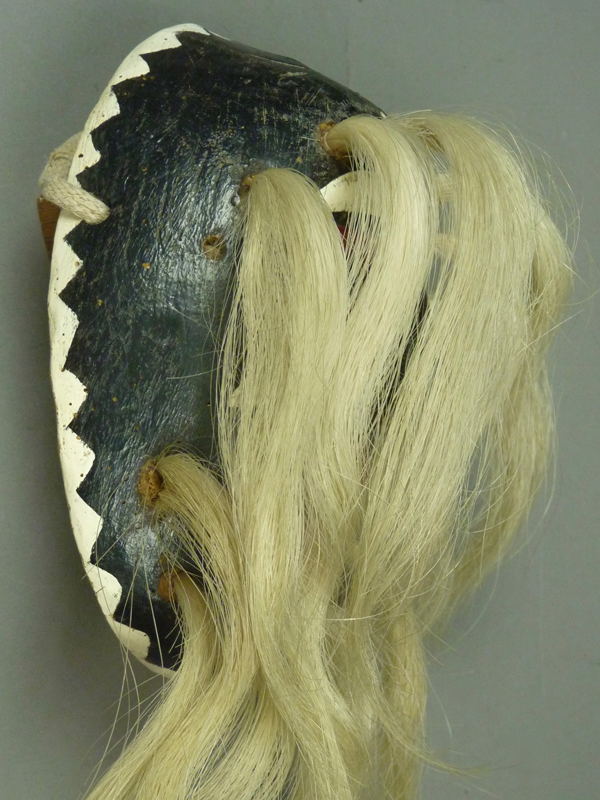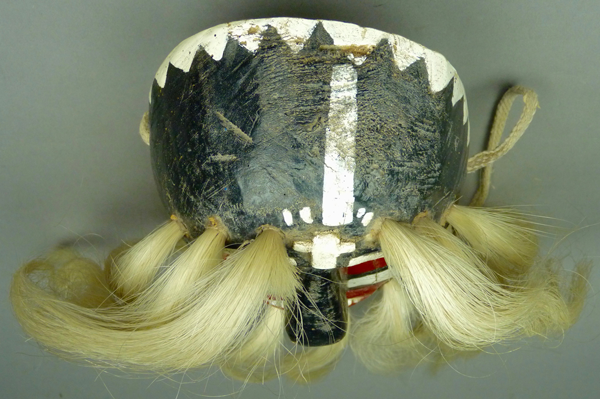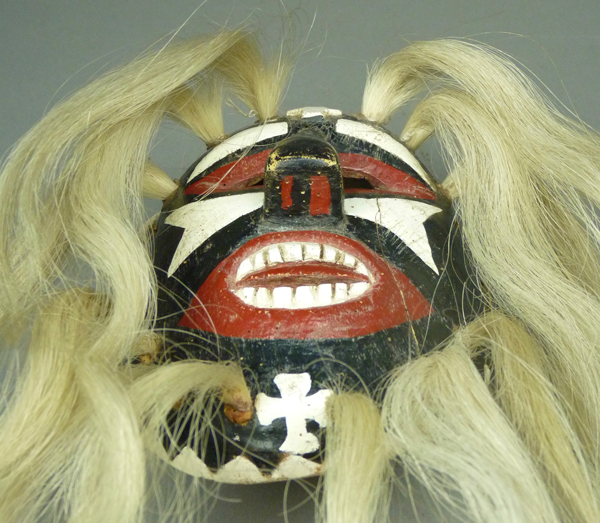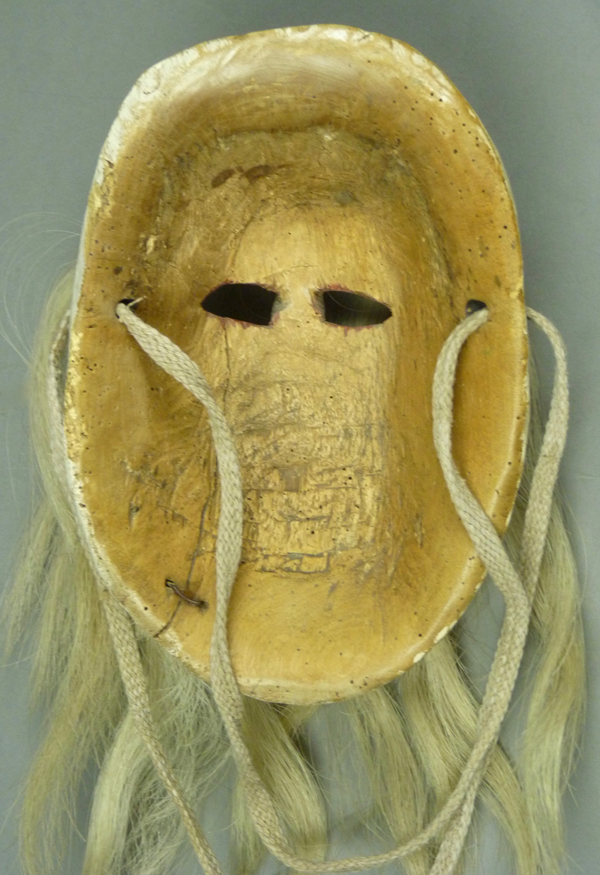Masks often arrive in the hands of a collector without the name of the carver. Through comparison with other masks in Museums and private collections, it is often possible to attribute an anonymous mask to a particular known carver’s style. Sometimes this attribution is easy, because the mask is so characteristic of a particular hand. However, there are inevitably other masks that defy such identification. I will be featuring such unidentified masks in a series of posts, beginning with this one.
I purchased this mask from Robin and Barbara Cleaver in October, 1988. It had recently been discovered by Roberto Ruiz in Navojoa, Sonora, a Mayo market town near other Rio Mayo villages. The most distinctive feature of this mask is the forehead cross, in this case a Christian Cross that has been carved in relief. You may recall that we have examined a few masks with painted Christian crosses and several more with inscribed (or gouged) Christian crosses, but this is the only example known to me of a Rio Mayo mask with a Christian cross that was carved in relief, and the majority of Rio Mayo masks have gouged Maltese crosses. The black paint of the face appears to be old and worn, while the areas painted white and red may have been redesigned and/or repainted. In other words, this mask may have had a different appearance when it was new. It is certainly handsome now.
There are what are called “triangular” eyes. The nose also has a triangular profile, from the side and from the front.
Other notable details involve the mouth, which has oval lips carved in relief, carved upper and lower teeth, and an extended tongue. These elements were all carved in place, including the tongue, and none of this carving extends through to the back. The apparent width of the mouth has been extended by painted corners, either originally or later.
Implanted hair bundles form brows and a beard, the bundles are held in place with wooden pegs, and the bundles are not anchored by string though the back of the mask. Two of the pegs are visible anchoring hair bundles near the right corner of the mouth.
The rim design was painted but not outlined with an inscribed line.
An awkward-looking off center line connecting the forehead cross to the rim design was probably added later.
There are painted wedges on the cheeks. A Maltese cross has been painted on the chin, probably by a dancer.
This mask is 7 inches tall, 5 inches wide, and 2¾ inches deep.
On the back the most notable feature is the absence of any string to secure the hair bundles. There is a long crack that extends up the left side of the back. This has been stabilized with a metal staple. The back has marked staining from use and there is an old (shoestring) strap that is soiled and mildly frayed.
Next week we will examine an old Rio Mayo Pascola mask that was danced by a grandfather, his son, and his grandson over a period of many years.
Bryan Stevens

